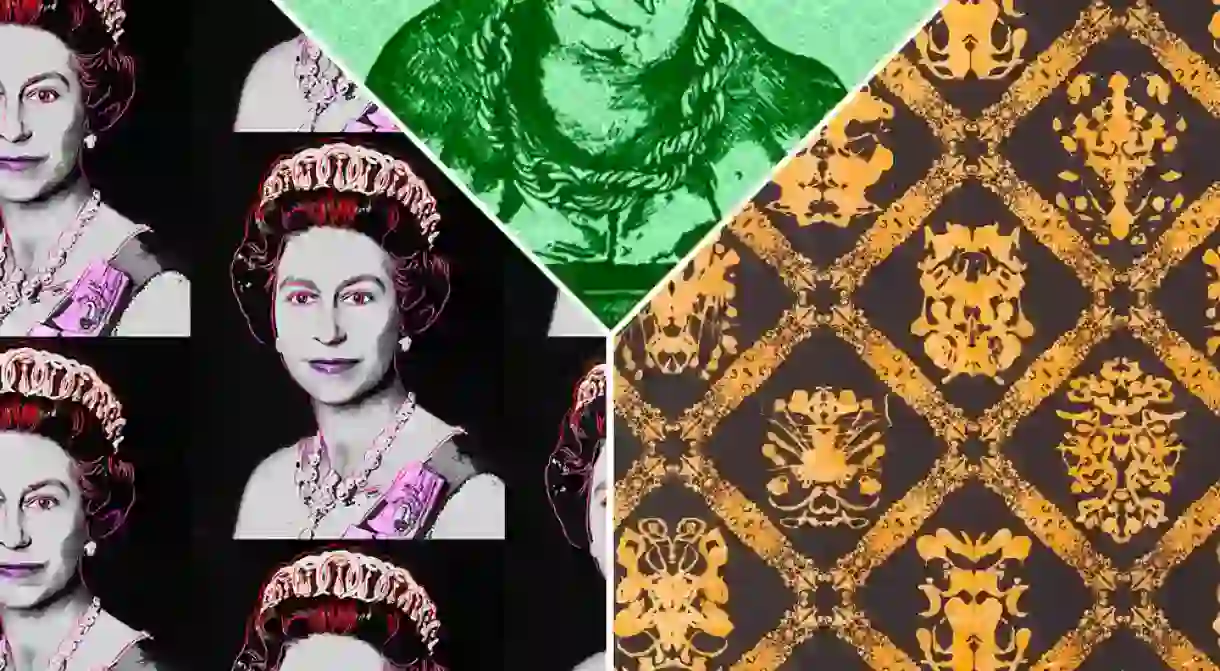How Flavor Paper Is Changing the Design Game

Not your grandmother’s wallpaper: Flavor Paper is transforming white walls into literal works of art, making wallpaper the new statement piece for the home.
It’s no surprise that Flavor Paper is topping the charts as one of America’s hottest design companies. Specializing in screen-printed and digital wallpaper, the Brooklyn-based company has worked with some of the world’s leading brands, including Nike, Steve Madden, and the W Hotel.

Jon Sherman, the founder and creative director of Flavor Paper, began the company in the Bywater District of New Orleans in 2013. “As part of my work in the real estate development world, I was doing some interior design and found out about this guy who had started a wallpaper company in the ’70s,” Sherman said in an interview. “Turns out he was trying to get rid of all his equipment, so I rescued it and taught myself how to make wallpaper.”
With the majority of Flavor Paper’s clients located in New York City, Sherman decided to move the company from Bywater to Boerum Hill in Brooklyn. Its headquarters, affectionately known as the “Flavor Lair,” houses its award-winning showroom and in-house production facility, which includes a darkroom, screen-etching equipment, and an ink room.
Passersby on Pacific St. can view the various screen printers at work through the large front windows. Inside, the 70 ft-long (21m) overhead mirrors provide a top-down glimpse of the hand-printing process.

Practically every room in the “Lair” is glammed out with (yes, you guessed it) wallpaper—black-lit Elvis wallpaper in the elevator, dizzying Warhol flowers in the entranceway, and a romantic, swirling frenzy of purple flowers in a floor-to-ceiling mirrored bathroom. Collectively, it’s a design mecca, one that feels immersive and playful, powerful and strange, and definitely doesn’t hold back on intensity.
“Visually, we can continue to create new product—and new visual interests. We feel that wallpaper really is for everyone,” says Todd Tilev, the vice president of sales.
Some of these new “visual interests” include Warhol’s ink blot paintings in a traditional styled damask pattern (inspired by the psychological “Rorschach” tests and reinterpreted with textured gold foil material), serene nature murals and hypnotic, near-3D still lifes. Flavor Paper even makes scratch-and-sniff wallpaper.

The company’s artistic range and product choice is beyond impressive. “Brooklyn Toile,” designed by Mike Diamond of the Beastie Boys, features the Borough Hall subway stop, tagged-up trains from the 1980s, and Notorious B.I.G’s face. There is also the “Fruit Cocktail Collection,” designed with Michael Angelo of Wonderland Beauty Parlor, that features scratch & sniff designs such as cherry and banana.
Each wallpaper design is customizable with various paper types, weights, and styles. “The ability to customize gives you the ability to tie together your existing furniture in a unique and novel way,” Sherman explains. “Wallpaper was traditionally meant to be more of a background. When I started Flavor Paper, it was really to take wallpaper from being a background material into a foreground material.”

Not all of the statement pieces are eye-candy and mood-setters though. Some tackle philosophical, cultural geists, like the beautiful yet unsettling “Vigilant Floral” wallpaper.
“What I love about the Vigilant Floral is you get these very vibrant, bright flowers, butterflies, and birds, and as you get into the design you start to see the razor wire and the closed-circuit TV cameras,” Sherman says. “It’s this subversive take on traditional design.”

This idea of the “surprise element” in design is what often makes it so powerful. After all, a statement piece doesn’t really make a statement unless it relays a significant message. Good design should leave a strong impression on the spectator, whether it’s a feeling, an idea, or a memory—the act of viewing, even passively, should be an enriching experience.
What does the future hold for the trending Flavor Paper? According to Sherman, the possibilities are limitless. New technology will play a key role in new designs: “The future is…playing with powders that change colors and even conductive wallpaper, where you can actually touch the wall and set off lights, sounds. I don’t think there’s an end game.”














